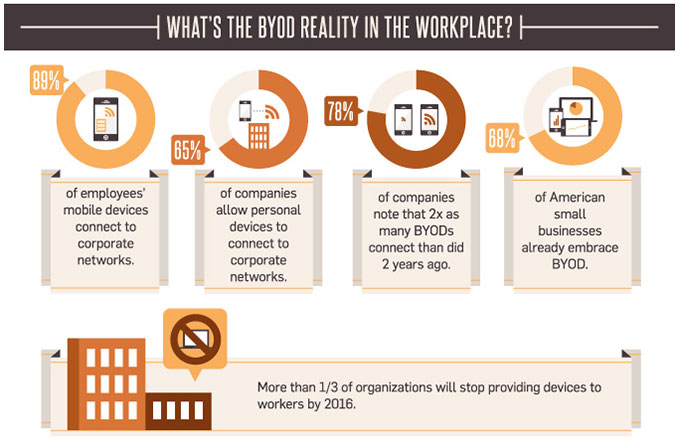Comprehensive Guide to Enterprise IT Service Automation
IT support automation uses software workflows, rule engines, AI/ML, and integrations to automate...
The bring-your-own-device (BYOD) movement provides the opportunity for substantial cost savings and improved productivity, but also poses potentially significant risks for data security and...

The bring-your-own-device (BYOD) movement provides the opportunity for substantial cost savings and improved productivity, but also poses potentially significant risks for data security and compliance. To make well-informed decisions, it’s vital for IT and business leaders to be able to quantify these and other metrics underlying the BYOD trend.
The post Five Key BYOD Trends and Statistics You Need to Know exposed the details behind some of these trends and offered recommendations for businesses to respond. This post looks at several more vital BYOD statistics, facts, metrics and trends.
In their infographic BYOD Boom: 2014 Will be the Year the Enterprise Goes Mobile, the team at Egnyte supply a wealth of quantitative data about the BYOD trend, such as:

But while offering benefits, BYOD also poses risks:
To capitalize on the potential service cost savings of BYOD while minimizing the associated risks, enterprises are advised to:
By understanding and acting on specific trends and metrics underlying BYOD, enterprises can best position themselves to capitalize on the cost-saving, productivity and business competitiveness benefits of the movement while minimizing any associated data security and compliance risks.
For more information:

IT support automation uses software workflows, rule engines, AI/ML, and integrations to automate...

Business process reimagined is the strategic renewal of how work gets done by combining modern digital...

You've probably noticed (what we're calling) the "logo-swap test" lately: all the AI ads in market sound...